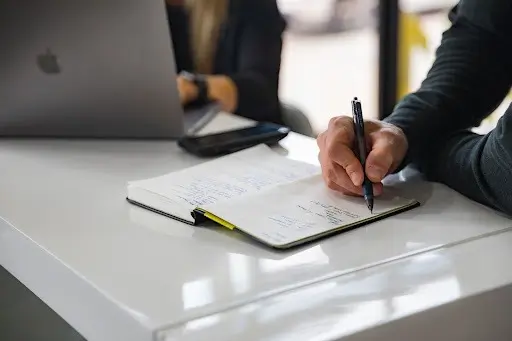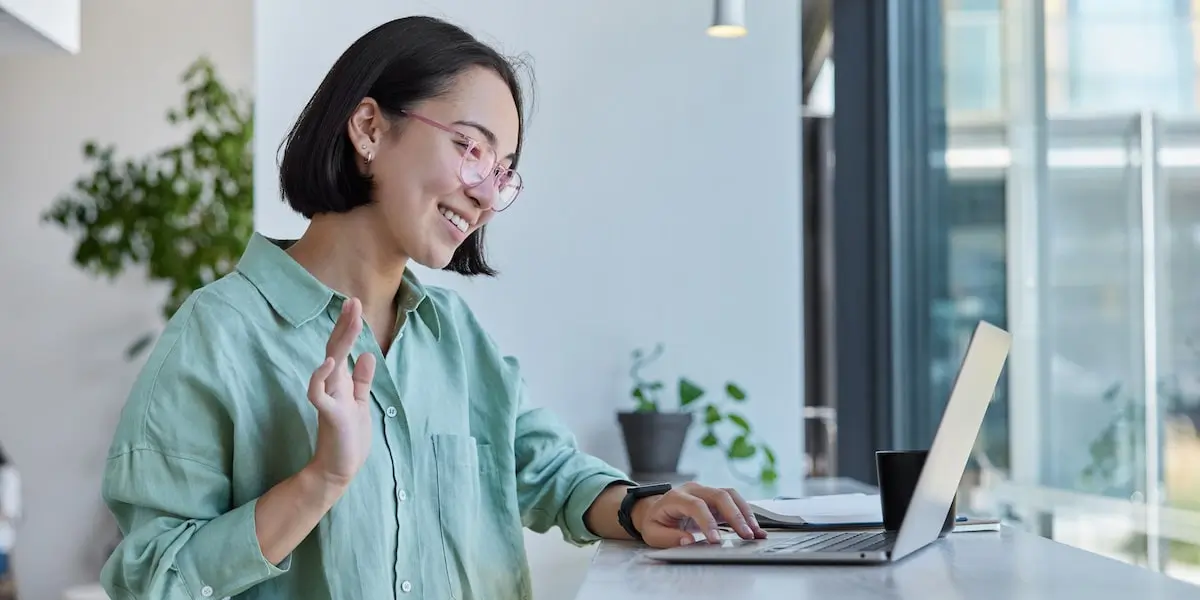UX designers learn about the people who will be using their products in a variety of ways.
Because the methods used traverse a wide variety of skillsets, they sometimes leave designers feeling like a researcher, scientist, journalist, and psychologist all wrapped into one.
A particularly useful tool among the various career-bending strategies designers employ are user interviews.
Just like many other types of interviews, user interviews consist of a relaxed dialogue between two individuals with one person guiding and asking questions and the other following and answering.
What makes user interviews different are the goals that the interviewer is hoping to achieve by the end of the session. Usually, this user research tool is used to gain valuable insight about the users behaviors, needs, motivations, and pain points to create an outstanding and successful product.
There’s a lot to learn about user interviews so we’ve compiled the most important pearls into this article. Here’s what we’ll cover:
- What is user research?
- What is a user interview?
- Why are user interviews important?
- Five most important tips to conducting a user interview
- Final thoughts
Now let’s get into it!
1. What is user research?
User research is the process and methodology of understanding the behaviors, needs, thoughts, and motivations of the users of a specific product.
Researchers use a variety of modalities like interviews, surveys, task analyses, usability evaluations, and observation to understand what works well for the users and what doesn’t.
Determining pain points, areas of friction, and unmet needs are major goals of user research.
The information synthesized from user research will inform what design decisions need to be made in order to make an effective and enjoyable product for real people to use in real time.
If you’d like to learn more about user research and how to get started with user interviews, this video will help. In it, seasoned UX designer Maureen gives you the lowdown:
2. What is a user interview?
A user interview is a type of questioning, conversation, and observation with potential users of a design or product.
It’s usually performed during early concept design, the ideation phase, or during a product redesign.
User interviews are an example of qualitative user data. In fact, they are very similar to qualitative interviews used in other research fields with slight tweaks to help them define the direction of a product design.
They are usually contextual, meaning they try to uncover the daily routine of the users and the environment in which the product will be used.
Furthermore, the questions asked during a user interview will aim to gain insight into the users needs, feelings, attitudes, beliefs, motivations, and current pain points. The questions may be pre-determined or free-form.
User researchers will compile the user responses, as well as make notes on their body language and emotions when speaking on the topics.
Depending on the circumstances, user interviews may be done in person or remotely over platforms like Zoom or Skype.
A user researcher may also choose to interview more than one user at a time in something called a focus group.
2. Why are user interviews important?
Quick, informative, and relatively easy to perform, user interviews give designers and researchers a lot of insight into what users think about a process, a product, service, or topic of interest.
They can be performed at a variety of points in the design process and will point out what areas users feel need improvement or what is attractive and memorable for them.
Like many other user research methods, user interviews can help fuel the creation of other important design tools like user journey maps, user personas, and product features to expand upon.
They can be performed at the end of a usability test to further define what the user thought about the experience and gain more detailed feedback.
Understanding the expectations of the people who will actually be interacting with and using a particular product is key to designing a successful and usable product.
Listening to their frustrations, hopes, needs, daily routines, and motivations informs designers of what steps need to be taken in order to make a product people will feel excited to use.
While designers, researchers, or stakeholders may have their own hopes or desires for the product, if they do not align with the needs and expectations of the users, the product is less likely to succeed and the company is less likely to profit or meet their business goals.
User interviews help ensure the product being designed is one that will be valuable to both the user and company.

3. Five most important tips to conducting quality user interviews
There are a few key concepts to keep in mind when designing, conducting, and analyzing a user interview that will give you quality, insight-revealing data.
We’ve highlighted some of the most important tips below.
How to find participants
It’s recommended to find interviewees that are a good representation of who your target audience will be. The best way to do this is to turn to your user personas. You’ll want to look for participants that match similar criteria.
A good way to weed out unuseful participants is to conduct a quick survey before officially inviting someone to the interview. The survey should help you find people with similar demographics, backgrounds, needs, and motivations as your user personas.
What to prepare for a user interview
For in-person interviews, make sure you choose a space that is comfortable and allows the participants to feel relaxed.
For remote ones, make sure your online platforms are well-established, and any links or necessary downloads are communicated with the interviewee ahead of time.
You’ll want to come up with a semi-structured guideline that includes an introduction, overview for the session, interview questions, and a conclusion.
It’s also crucial that you’ve laid out your specific goals for the session and what questions you hope the interview to answer.
In addition, be sure to prepare a note-taking system that isn’t too distracting, and that won’t take away from the interviewee’s expression or experience.
Audio recording is a good option, but be sure to ask for consent first. You may even want to recruit a partner to help share the burden of note-taking and offer assistance and support during the interview.

Coming up with the right questions to ask
The best way to set your user interviews up for success, is to come up with a loosely-structured question and topic guide.
The topics and questions you include should lead you to valuable insights on the goals you have set out to achieve during the interview and problems you hope to solve.
For instance, let’s take a scenario where you”re trying to figure out why 68% of users are choosing not to upgrade to a premium level grocery-delivery service.
You might want to focus on topics like price expectations, what features they find are worth paying for, most important needs, and other premium services they’ve paid for in the past.
It’s also best practice to include general questions about the user as well as specific ones about the product. Here are some examples of each:
General questions:
- “Tell me a little about yourself.”
- “What does your daily schedule look like?”
- “What apps do you tend to use the most?”
Product specific questions:
- “What were your first impressions when using the app?”
- “How did you feel when using [X] feature?”
- “What do you expect from an app/feature like this?”
Try to keep questions brief, clear, concise, and free from uncommon jargon. Include lots of open-ended questions that can lead to casual dialogue or follow up questions.
Avoid leading questions or comments that sway the user in one direction or another. Below are a few good resources for preparing open-ended and useful questions:
- Question types
- Nielsen Norman Group collection of open-ended questions
- Some more user interview questions
Leave room for the user to lead
As an interviewer, it’s pertinent to leave room for the user to expand upon their thoughts, frustrations, praises, and confusions.
A good interviewer usually never speaks too much and allows room for the user to freely express. Your role as an interviewer should be more of a guide rather than a strict director.
You want to create a space that your interviewee feels safe and comfortable to express themselves in. Try to use positive body language and make the user feel welcome.
Avoid questions that will lead to a simple “yes” or “no” answer. If you feel like your participants are giving shorter answers without much content, don’t be afraid to ask them to elaborate or ask follow-up questions afterwards.
Follow-up questions are usually a what, why, or how question. For example, “why do you feel that way?”, “what about [X] do you like/dislike?”, and “how would you expect a feature/product like that to work?”, are all good follow-ups to ask.
It’s also important to remember that your interview may not go exactly as you expected. You may be anticipating the user to express complaints in one area but they begin to list off frustrations they have in another.
Allowing the user to lead may offer you insights you weren’t thinking of. Unless the interview is getting severely off topic, it’s okay for things to go “off-guide”.
Review your notes shortly after the interview ends
User interviews, especially multiple in one day, can be tiring and overwhelming.
As tempting as it is to pack up and go home immediately after, try to reserve space and time to review your notes. Jot down any things you forgot, and make a brief outline of the data you gathered.
Go back to the goals you laid out ahead of time and evaluate if any of them were met and if any specific questions you had were answered.
Try to briefly organize the data in a way that will make it easier for you to revisit and analyze later.

5. Final thoughts
User interviews offer design and research teams ample amounts of information about their users.
Directly speaking with people who match your user personas or who actually interact with your product already, offers accurate and invaluable data about how to go about creating or improving your designs
However with so many user research methods available, it can be difficult to choose which strategy is best for your project. User interviews may not be the best fit for what you’re creating depending on where you are in the design stage, resources, or project limitations.
If you’d like to learn more about user research and user interviews, check out these articles:

